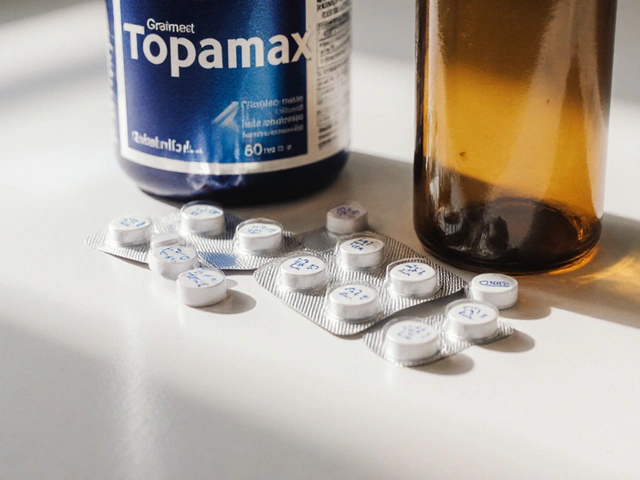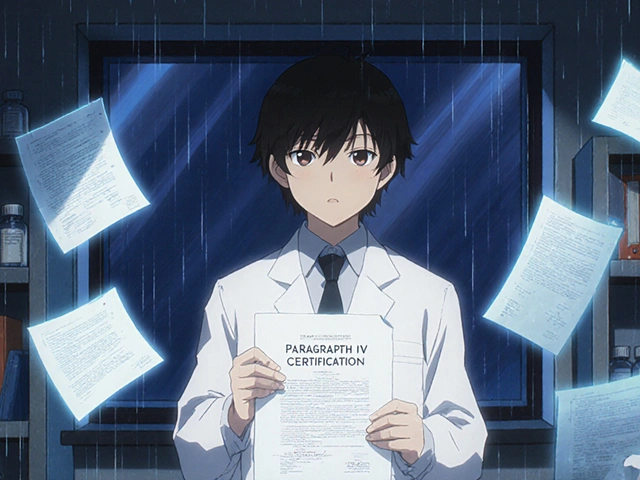If you think the biggest threat to your health is lurking in your DNA, you’ll be shocked by how much your surroundings actually matter. We’re surrounded by hidden forces, from invisible toxins to the late-night glow of our phones, all weaving quietly into the story of how tumors grow. Scientists have found time and again that environmental factors can turbocharge or slow down tumor progression. Some of these are obvious (like cigarettes), but plenty sneak below the radar. Knowing what speeds up tumor growth isn’t just information—it’s a chance to tweak your own risk trajectory. Ready for some things you might not realize?
Toxins in Everyday Life: Air, Water, and Chemicals
Start by looking around your home, your neighborhood, and even your grocery cart. Car exhaust on your daily commute, residue in your local tap water, or cleaning supplies under your sink—all these can introduce chemicals the body struggles to handle. Industrial pollutants like benzene and formaldehyde, common in some cities and workplaces, are classified by the World Health Organization as known human carcinogens. Even at low doses, constant exposure chips away at your cells’ ability to repair themselves.
Let’s talk indoor air for a second. Homes with heavy off-gassing from furniture, carpets, or paints can make you breathe in formaldehyde all day without realizing. While regulations have gotten stricter, older buildings and certain imported goods still pose risks. Air filtration, regular cleaning, and venting your home aren’t just about “freshness”—they really do help cut down particle exposure.
Here’s another curveball: not all toxins are obvious. PFAS chemicals, used for water or stain resistance on clothes and pans, have earned the nickname “forever chemicals” because they barely break down. Researchers link them to aggressive tumors in the liver and kidneys. Some common food packaging—even popcorn bags—can leach these into your snacks. Surprisingly, tests have found these chemicals in the blood of up to 98% of Americans. If you want to cut your risk, swap nonstick pans for stainless steel or cast iron, and go for fresh or frozen foods over packaged ones.
Now, about water. Many think their tap water is perfectly safe, but studies show traces of arsenic or industrial solvents (like trichloroethylene) remain problems in some U.S. regions. Long-term, low-level exposure to these contaminants has been linked with higher cancer rates, especially of the bladder and liver. If you’re not sure about your local water, check municipal reports and consider activated carbon filtration.
Scented candles and air fresheners? Those lovely smells sometimes come from synthetic chemicals, like phthalates or volatile organic compounds (VOCs), which researchers say could mess with hormone balance and even trigger DNA damage. It’s worth checking the labels or switching to beeswax or soy candles with natural scents.
| Chemical/Toxin | Main Sources | Linked Tumor Risks |
|---|---|---|
| Benzene | Car exhaust, tobacco smoke, industrial emissions | Leukemia, lymphoma |
| Formaldehyde | Plywood, insulation, textiles | Nasopharyngeal, leukemia |
| Arsenic | Contaminated groundwater | Skin, bladder, lung |
| PFAS | Nonstick cookware, food wrappers | Liver, kidney |
| Phthalates, VOCs | Plastics, air fresheners | Endocrine tumors |
tumor progression really can come down to these daily, often invisible exposures. There’s no need to feel paranoid, but a few lifestyle swaps can genuinely lower your long-term risk. Choose less-processed foods, invest in a HEPA air filter if you live in a smoggy area, use glass or steel containers instead of plastic, and keep an eye on the Environmental Working Group for updates on hidden household pollutants.
Radiation: Beyond the Sun and Medical Scans
So, everyone knows a sunburn can do more than make you peel—over time, those UV rays scramble DNA, especially in skin cells, making them more likely to go rogue. But don’t stop at the beach. Radiation lurks in a lot more places than most folks realize.
Take radon, for instance. This naturally occurring radioactive gas seeps up through soil and can collect in basements and ground floors, especially in older homes or certain parts of the country (the Midwest and Northeast, for example). The EPA says radon causes around 21,000 lung cancer deaths a year in the U.S.—only smoking triggers more. Pro tip: Home radon testing kits are cheap and easy to use.
Medical imaging is another double-edged sword. CT scans and X-rays are essential for diagnosis and treatment, but they also pack a radiation punch. Doctors estimate a single CT scan equals several hundred regular X-rays. For healthy people, occasional scans aren’t a huge deal, but repeated exposures (for instance, if you’ve got a chronic health issue) really add up. Oncologists advise always asking if an MRI (which uses magnets, not radiation) would do the job, and making sure scans are spaced out unless absolutely needed.
Your tech habits can also have a tiny ripple effect. “Radiation” from cell phones and Wi-Fi is non-ionizing, so it’s way less risky than sun or radon. Still, researchers are watching because the body of evidence linking cell phone use with brain tumors keeps growing—especially for people who spent decades with their phone glued to their ear. While the jury’s technically still out, a good tip if you’re concerned: use headphones or speaker mode whenever possible, and keep your phone on airplane mode when carrying it next to your body for long stretches.
Let’s not forget something most folks overlook: Cosmic rays. Yep, flying at high altitudes exposes you to more cosmic radiation—and if you’re a pilot, flight attendant, or a frequent-flyer business traveler, your exposure might be double or triple that of someone on the ground. Airlines monitor this now; frequent flyers should, too, especially if already at higher risk for cancer.
And then, there are some workplaces—think nuclear plants, certain factories, or even old hospitals with outdated imaging units. If you work in these environments, regulations by OSHA and similar agencies require regular checks and dosimeter badges. Never skip these safety steps; speak up for best practices at your workplace.
| Radiation Source | Relative Risk | Prevention Tip |
|---|---|---|
| UV from sunbeds | High (escalates with use) | Skip tanning beds, use SPF 30+ |
| Radon gas | High in some regions | Test home, ventilate basements |
| Medical CT scans | Medium if repeated | Limit scans, choose MRI when possible |
| Cosmic rays (flying) | Medium for frequent flyers | Track exposure if job-related |
Even if you can’t avoid every bit of radiation, being aware really helps. Slather sunscreen, test your home, stay curious about your scan history, and use your smartphone smartly. That’s a simple equation for cutting down risks and slowing any tumor progression that could be influenced by environmental factors.

Dietary Drivers: Food Choices That Nudge Tumors
What you put on your plate matters far more than most people realize. Decades of research have shown links between diet and cancer risk, but the real shock comes with how certain foods can either fuel or fight tumor growth. Processed meats, for example, aren’t just a heart risk—they contain nitrosamines and other additives now definitively tied to colorectal and stomach cancers. The World Health Organization classifies bacon, deli meats, and hot dogs as carcinogenic and recommends strictly limiting them.
On the flip side, let’s look at fiber. A large study in 2021 followed over 500,000 adults and found people with the highest fiber intakes (think: fresh veggies, whole grains, fruit) had up to a 20% lower risk of some digestive system cancers. Fiber doesn’t just keep you regular; it feeds good gut bacteria, which keep inflammation low and help clear out damaging toxins.
There’s also the sugar story. It’s tempting to think “sugar feeds cancer” is just a scare line, but high blood sugar levels create the perfect storm for tumor cells, which gobble up glucose for fuel. While the occasional dessert won’t doom you, a pattern of high-glycemic foods—like white bread, sugary drinks, or candy—raises not only diabetes risk, but also ramps up the engines of tumor growth, especially in people with insulin resistance.
Let’s talk pesticides, too. Many non-organic fruits and veggies have residues from chemicals like glyphosate. Large-scale studies show low-level exposure won’t likely hurt most people, but certain pesticides are classified as probable carcinogens for farmworkers and folks in spray-heavy areas. Some nutritionists suggest washing produce thoroughly or buying organic for items on the “Dirty Dozen” list—like strawberries and spinach.
Alcohol is another player in tumor progression. It’s linked strongly to head, neck, liver, breast, and colorectal cancers. One meta-analysis in 2022 showed even low to moderate drinking (like one drink per day) increased risk for several types of cancer. Your safest bet: limit alcohol as much as possible or skip it entirely.
But it isn’t all bad news. Antioxidant-rich foods—think blueberries, broccoli, and green tea—show real promise in helping the body mop up DNA-damaging free radicals. Omega-3 fats (from fish or flaxseed) can help tame chronic inflammation, which is a big driver of the tumor environment.
- Choose grilled, baked, or steamed foods over fried or charred, since charring meats can create carcinogenic compounds (like heterocyclic amines).
- Eat the rainbow—variety increases the odds you’ll get all the vitamins, not just one or two powerful ones.
- If you eat meat, opt for grass-fed or organic where possible, and cut down processed meats to rare treats.
- Boost fiber by adding beans, lentils, nuts, or chia seeds to your meals.
- Skip sugary sodas for seltzer or unsweetened tea.
Staying curious about where your food comes from is smart, not obsessive. Check out news about food recalls or residue findings now and then. This isn’t about perfection—just about nudging your regular choices toward foods that help your body rather than hurt it.
Lifestyle Elements: Stress, Sleep, and Physical Activity
Most folks think about genes, bad luck, or sheer exposure, but lifestyle fills in the blank spaces between risk and protection. Chronic stress, for starters, doesn’t just make you feel strung out. It floods your system with hormones like cortisol and adrenaline, which, over time, can encourage new blood vessels in tumors (making them grow more) and suppress the body’s ability to spot and kill pre-cancerous cells. People in high-stress jobs or tough family situations often show more signs of inflammation, which researchers say is a key environment for cancer to thrive.
But here’s something most of us miss: chronic sleep deprivation is a risk, too. Multiple studies have found poor sleep quality or short sleep duration links up with several cancers, especially breast and colon. Sleep does more than rest your mind—it gives your immune system time to sweep away abnormal cells. Shift workers, who often work through the night, show higher tumor rates likely because disrupting circadian rhythms (the sleep-wake cycle) throws off the body’s ability to repair DNA damage.
Physical inactivity is another almost invisible risk. You don’t need to become a marathoner, but sitting for long stretches (hello, laptop lifestyle) is now a known risk factor for cancers such as breast, endometrial, and colon. Regular movement, even simple walking, slashes inflammation, supports the immune system, and helps balance hormones. That legend about 10,000 steps a day? While no one number works for everyone, aiming for at least 150 minutes a week of moderate activity is a true cancer-fighter.
Want another reality check? Obesity doesn’t just mean a higher risk for diabetes, heart attack, and joint trouble. Fat tissue pumps out hormones and inflammatory chemicals that make it easier for tumors to take root and grow. The American Cancer Society lists it as a key driver behind more than a dozen different cancer types. If weight is a concern, even a 5-10% loss can make a measurable difference in hormone levels and inflammation markers.
What about your social habits? Loneliness and isolation don’t usually get a mention when talking about cancer, but researchers are now linking strong social networks with slower disease progression. Support from family, friends, or community groups has measurable effects on immune strength and stress reduction.
Here are some practical steps:
- Practice stress management: yoga, meditation, or simple breathing techniques have been shown in clinical trials to drop inflammation and support immune health.
- Set a sleep routine—go to bed at the same time; cut back on screens at night; darken your room for better melatonin production.
- Move every day, even if it’s low intensity—dancing while cooking or walking the dog totally counts.
- Stay connected: make time for friends or hobbies, even a quick check-in call makes a difference.
Curious just how fast can tumors grow? It’s not just genetics—these environmental and lifestyle shifts can speed things up or slow them down. There’s no magic bullet, but every step you take builds into a healthier, less tumor-friendly environment inside your body.
It’s easy to feel overwhelmed by all the influences swirling around us. Remember, it’s less about living in a bubble, and more about making small, regular tweaks in how you eat, move, manage stress, and tweak your home. No one change fixes everything, but layering smarter habits over time truly does tip the odds in your favor.







Comments
Jacqueline D Greenberg
Let’s start with something simple: keep your living space ventilated and consider a HEPA filter if you’re in a smog‑prone area. Swapping out non‑stick pans for cast iron or stainless steel can dial down PFAS exposure without turning cooking into a science experiment. Fresh produce rinsed under running water and, when possible, buying organic for the “Dirty Dozen” helps curb pesticide residues. And remember, a night’s sleep isn’t a luxury-it gives your immune system the downtime to hunt down rogue cells. Small, consistent tweaks add up to a healthier environment inside your body.
Jim MacMillan
While the average reader skims over the minutiae, the real masterstroke lies in understanding dose‑response curves and the cumulative burden of low‑level toxins 😎. Ignoring the data because it’s uncomfortable is tantamount to self‑sabotage, especially when epidemiological models show clear associations between chronic VOC exposure and oncogenic pathways. The sophisticated reader will invest in certified water filtration and replace scented candles with artisanal beeswax alternatives, thereby reducing endocrine disruptors. Knowledge without action is merely an intellectual exercise; apply it and watch your risk trajectory flatten.
Dorothy Anne
Keep moving, keep thriving!
Sharon Bruce
From a proud American standpoint, protecting our homes from radon and industrial pollutants is a civic duty 🇺🇸. Testing basements and advocating for stricter EPA standards can make a real difference for neighborhoods across the heartland. Simple actions, like sealing cracks and improving ventilation, empower us to safeguard our families.
True Bryant
When dissecting the etiological mosaic of neoplastic progression, one must appreciate the interplay between exogenous carcinogens and endogenous metabolic fluxes. Chronic exposure to polycyclic aromatic hydrocarbons initiates DNA adduct formation, which, if unrepaired, precipitates mutagenic cascades. Concurrently, hyperglycemic milieus foster the Warburg effect, providing neoplastic cells with an abundant supply of glycolytic intermediates. The synergistic amplification of oxidative stress via ROS generation further destabilizes genomic integrity, creating a fertile ground for oncogenesis. Moreover, endocrine disruptors such as phthalates aberrantly activate nuclear receptors, perturbing cellular homeostasis and potentiating proliferative signaling. Epidemiological datasets consistently reveal dose‑dependent risk curves for ambient benzene and formaldehyde, underscoring the necessity of dose‑reduction strategies. From a mechanistic perspective, upregulation of CYP450 enzymes in response to xenobiotic load can paradoxically increase the bioactivation of pro‑carcinogens, compounding mutational burden. The infiltration of inflammatory cytokines, driven by chronic psychosocial stress, orchestrates a tumor‑promoting microenvironment through NF‑κB pathway activation. Lifestyle interventions that attenuate systemic inflammation, such as regular aerobic exercise, have been shown to modulate epigenetic markers associated with tumor suppression. Importantly, dietary fiber serves as a prebiotic substrate, fostering short‑chain fatty acid production that reinforces colonic barrier function and promotes apoptosis of dysplastic cells. While the oncology community lauds immunotherapy breakthroughs, the foundational principle remains: reducing antigenic load via environmental hygiene enhances therapeutic efficacy. Therefore, a holistic regimen encompassing air filtration, radon mitigation, judicious imaging, and nutritionally dense food choices constitutes a multi‑pronged defense against tumor acceleration. In sum, the confluence of toxicological vigilance and behavioral optimization forms the cornerstone of cancer prevention in the modern era.
Danielle Greco
Whoa, that was a whirlwind tour of science‑speak! 🌟 Your deep dive makes the case crystal clear: tiny everyday choices can stack up like a tower of dominos. I love how you blended the gut‑health angle with pollution facts-makes me want to swap my soda for kombucha right now. Keep dropping those knowledge bombs, they’re as tasty as a fresh‑baked croissant.